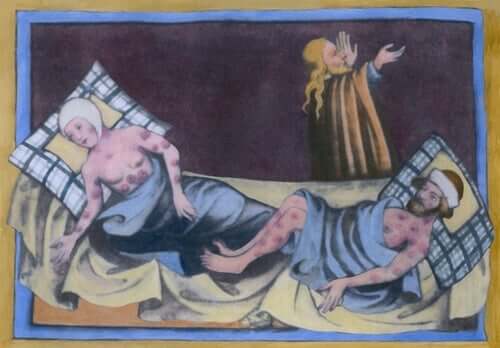In a port city of about 100,000 inhabitants and of great importance, a drunken cargo arrived on a bad day. In less than a month, 300 people have lost their lives every day in a deadly epidemic. By the end of the Black Plague, about 10% of the city’s population had died.
The origin of the pandemic and the methods for stopping it are unknown. Men and women, children and elders, peasants and craftsmen, clerics and soldiers, all died equally; the most democratic event of their lives was the end. There was no escape possible.
- It was not a zombie story.
- For example.
- The city was Valencia.
- During the reign of the crown of Aragon.
- In 1348.
- And the epidemic was called Black Plague.
Only in an exercise in empathy, putting ourselves in the shoes of these medieval men, can we understand their attitude, their mentality or the choices they have made, knowing the magnitude and characteristics of the disaster can help us put ourselves in their shoes.
Valencia or Aragon were no exception; in the mid-14th century, the plague hit Europe in one of the greatest demographic disasters in history.
He was well known to the inhabitants of the Old World, who had lived with the plague for several centuries and would continue to suffer for a few more centuries.
However, it had not manifested itself so strongly since the time of Emperor Justinian in the 6th century and has managed to generate greater fear than the queen of ancient evils: leprosy.
There is consensus among historians on the entry point to Europe: Caffa, Crimea. The Mongol army surrounded the city and carried something more deadly than their swords. The Mongols themselves are said to have dumped infected corpses near their enemies.
Actually, there is no need to summon some kind of primitive biological warfare, there is no wall that can prevent the passage of mice and fleas.
Genoese traders, on high alert, fled to Italy. It was too late because the Mediterranean went from the river to the bridge. In less than a year, the entire West has been condemned.
At the time, propagation was believed to be by air. The strong smell emanating from corpses, Greek medical tradition and astrological superstitions pointed in this direction.
The disease is most likely transmitted by the speed of the mice and fleas they carried. Until two weeks after infection, symptoms did not appear; in five days, death was certain.
A new outbreak of spread has been established in all ports of the infected city, the flight of cities has caused the plague to the countryside, where the demographic effects have been, so to speak, catastrophic.
The main trade or pilgrimage routes have been transformed into rivers of death. After the passage of the Black Plague, temples dedicated to Sao Roque remained in search of a divine intercession that never occurred.
Today we believe it was bubonic plague, but no other options, such as Ebola or pulmonary anthrax, are ruled out.
The symptoms were overwhelming. Since the black dots?Are they the reason for the name of the disease? Delusions or inflammation were all warnings of imminent death. In addition to air or animal contagion, blood was also very dangerous. Caring for the sick has become impossible and unfortunately has been very dangerous. Abandoned.
Hunger, large numbers of orphans and crop loss are the logical consequences of the demographic crisis, so it is difficult to separate the direct and indirect deaths caused by this phenomenon.
-During this plague, did they die?-Giovanni Villani, unfinished before he died of the plague-
Human losses reached 50% or 60% in France, England, Italy and Spain, with even higher incidences in some regions.
Among the victims were prominent figures, such as Alfonso XI of Castile, who died besying Gibraltar. The fighters even agreed to a truce during the Hundred Years’ War.
The response to the disaster was, of course, chaotic. As was common at the time, Jews were quickly cast as scapegoats. Accused of poisoning the population, they were the target of desperate mob attacks.
In the face of social turmoil, conservatism made little sense; during the plague epidemic, prostitution and other addictions increased dramatically, perhaps in a desperate carpe diem; apocalyptic piety has also developed, seeking forgiveness of sins in the face of imminent death.
A curious economic consequence was the liberation of large amounts of land, many peasants who did not die were able to use them, in a subsistence society the death of a neighbor brought a poisoned gift, the truth is that after the plague came the Renaissance.

